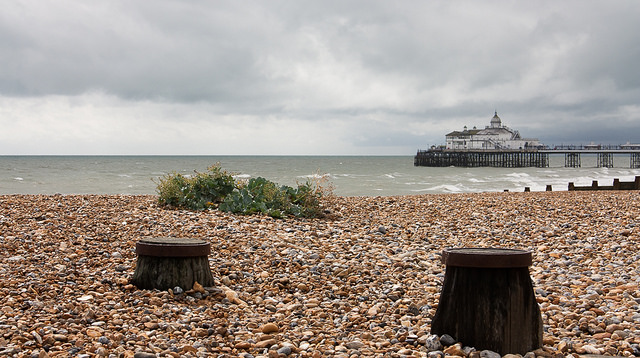What is it about Wyeth?
Up till a few weeks ago the only Andrew Wyeth painting I knew was (yes you’ve guessed it) Christina’ World. This wasn’t down to intentional avoidance tactics, just that somehow I’d managed to miss the rest. So while working out what I was going to say in this post I’ve been spending some time exploring his work. There’s a lot of it. I think it’s really good. I’m not planning on talking so much about him and his life because loads of people have already done it really well (links at the end); I want to talk about his marmite effect. See I’ve found that he’s somewhat contentious, people love him or loathe him. Not all people of course, that’s a rhetorical effect again. I like those. As in my previous post.
He seems to be the depleted uranium round in the war with modernism. The laser-guided munition fired against all the drippers and splodgers. The American Artist (in fact the ‘premier American Artist’ of which more later) who painted real people doing real things in a proper painterly manner with real skill, unlike all that stuff 5 year olds could do. It’s all bollocks of course, apart from the real skill part, he was all that. He picked on a difficult medium, egg tempera, which requires a lot of skill to master and which gives his work it’s texture. Spent a lot of work out in the field sketching and was a bloody good draftsman.
But a painter of real life, no way. Wyeth no more paints real American life any more than Ansel Adams photographed the real American landscape or constable painted 19th century rural England. The cheerful rustic dream of the Hay Wain isn’t the real one of poverty, under-employement and the poor laws. Take the painting we all know – now it’s easy to read this as young girl, in a field on her nice family farm. Touseled hair, sprawled on the ground, dreaming of her future. Easy reading isn’t it? I read it like that and so did at least one other person I ran it past. But it’s not: it’s a 55 year old woman crippled with polio looking at the house where she eaked out a poverty stricken existence…and it’s not even her, other people posed for parts of her because Wyeth wasn’t happy about asking her to pose too much. He’s not guilty of pulling of any deceptions here, he painted what he wanted to paint in the way he wanted to paint it. He’s not staking any claims to be a particular type of artist or to be opposed to anything.
1948, the year of Christina’s World has Pollock getting really into the dripping and De Kooning abstracting for all he’s worth. The year after would see Life ask of Pollock “is this the greatest living American painter?”. As time goes on Wyeth is either loved or vilified, depending on what side of the abstraction fence you were on (or indeed perhaps still are). He’s either about real art or a reactionary has been depending on how blinkered your viewpoint was. I think, and it’s a personal view though not an original one, that the reason Wyeth is so much a poster child for ‘real art’ is about what he isn’t.
*“In today’s scrambled-egg school of art, Wyeth stands out as a wild-eyed radical,” one journalist wrote in 1963, speaking for the masses. “For the people he paints wear their noses in the usual place, and the weathered barns and bare-limbed trees in his starkly simple landscapes are more real than reality.” *
So there you are; he’s the painter of the person on the Maine omnibus, the one it’s safe to like, the one you don’t have to think any of those wild modernist ideas to like. It’s very easy to remember the 60s (if you can) as the summer of love, woodstock and all that sort of thing, but most of it wasn’t like that. In 63, black people were still using separate drinking fountains in much of the south, the pill wasn’t easy to get (and it’s way before Roe v Wade), fuel was cheap, the US hasn’t yet realised where it’s involvement in Vietnam was going and the Hayes Code still pretty much governed cinema. I reckon it’s the America the republicans wished they still had. Talk to many conservatives in the US today and they view Europe as a place from which all the dangerous and left wing ideas flow…and modernism was just so very European. Who is the journalist in the above quote talking about who paint people without their noses in the right place? Sounds very pre-war too me, not really very 60s art at all, not Pop Art or anything. I’ve just read an article which takes the position that one of the candidates in the current American election isn’t fit because he’s a socialist and that all the countries in Europe do that and are somehow ‘bad’ because they state control a lot of things.
In 65 Time called him America’s Pre-Eminent Artist (in an interview in which he, interestingly, called himself an abstractionist and said he detested the sweetness in muc realistic paiting) – now that’s a heck of a big accolade for anybody and one which Time doesn’t justify in the article. It throws it in right at the begining, twice, and then moves on. I’d say it’s an empty bit of rhetoric for any artist at any time and in any place and is more interesting for what it says about Time than about what it says about Wyeth. The article is free to look at on the Time archive and is worth reading for anybody interested in Wyeth and drawing their own conclusions
Personally, I think he’s generally very ‘modern’, he may be right in calling himself an abstrationist but not in the sense of the abstract expressionists, cubists, futurists, vortacists or whatever. His work is not chocolate box stuff, apart from Christina’s World until you lean what the image is about at any rate. So I’m not going to join in the line drawing and name calling: he’s an artist, he’s a good one too. Job done in my book.
Some other interesting articles
Andrew Wyeth dot Com
Smithsonian Mag
His obituary
Looking Out, Looking In

